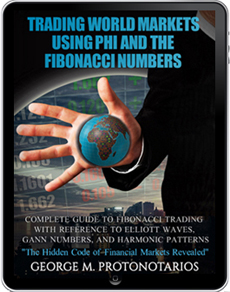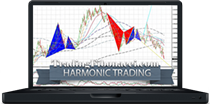
“Technical Analysis of Stock Trends” by John Magee and Robert D. Edwards is the first book to offer a solid methodology for analyzing the predictable behavior of financial markets. Here are some important insights we can gain from studying the book.
Technical Analysis and Charting
Prices reflect a wide range of variables.
Changes in the price of financial assets capture numerous fundamental factors and influences, including fear, greed, deceit, gullibility, brokers’ need for income, money managers’ need for performance, economic forecasts, monetary liquidity, manipulation, fraud, economic cycles and beliefs about them, public sentiment, and the persistent human desire to be right.
Charting and the balance between supply and demand
There is a saying on Wall Street: “There is nothing wrong with charts; the trouble is with the chartists.” This means the issue lies not with the chart itself but with its interpretation.
What creates supply and demand doesn’t matter; only the balance between them counts. The technical analyst’s job is to interpret the shifts in supply and demand reflected in the charts. Constantly ask yourself, “What does this action indicate about supply and demand?” This requires judgment, perspective, and a continual return to first principles.
General types of charts
Technical analysis employs three general types of charts: arithmetic, logarithmic, and semi-logarithmic.
-
Logarithmic charts use logarithmic scales on both axes
-
Arithmetic charts use linear scales on both axes
-
Semi-logarithmic charts use a logarithmic scale on one axis and a linear scale on the other
For manual charting, semi-logarithmic charts remain the superior choice.
Important chart formations
Chart formations are, in essence, the language of the market—graphical representations of unchanging human behavior in complex, multivariate situations. They are the indelible fingerprints of human nature made visual.
Basic Points Regarding Charting and Trading
- Chart fluctuations may indicate significant changes in the supply-demand balance, signaling consolidation or reversal.
- Volume should generally follow the trend, increasing on rallies and decreasing on reactions. However, this rule should be applied carefully; a notable rise in activity can signal either the start (breakout) or the end (climax) of a market move.
- Trends and trendlines help determine the general market direction and detect changes. Occasionally, trendlines can be used for entry and exit points in short-term trading.
- Support and resistance levels may show where a move is likely to slow or end and where it may be advantageous to take a position. These studies are particularly useful for “cash-in” or “switch” signals.
- The general characteristics of the various stages in the market’s primary Bull and Bear cycles should always be kept in mind. Maintaining perspective on the broader market picture is essential, as the basic economic tide is a key element in the supply-demand equation for each asset.
- Major Bull and Bear markets have recurred in fairly regular patterns throughout recorded economic history, and there is no reason to believe they will stop recurring as long as our current system remains.
Short-Term Price Patterns
These are some basic short-term patterns:
- One-Day Reversals
- Selling Climax
- Spikes and Gaps
- Runaway Days
- Key Reversal Days
The One-Day Reversal (Basically Bearish)
One-day reversals frequently appear at market tops of assets with a relatively small floating supply and a strong advance involving public participation.
In most cases, one-day reversals do not have major trend implications.
Bearish one-day reversals are rare in stock market indices.
Bullish one-day reversals (selling climaxes), however, are often seen in stock market indices at the end of panic declines.
Describing the One-Day Reversal
A one-day reversal usually begins with a day of unusually high volume, far exceeding the daily turnover of any session in recent months. It follows a fairly long and steady market advance (or similar decline). Often, even the opening sales gap far beyond the previous day’s close, leaving a large gap on the chart. The session ends with a final burst of activity that brings the closing price back to near where it started the day. Despite heavy activity and intraday price swings of 2 to 3%, the net change from the previous day’s close is very small.
The Selling Climax (Bullish)
A Selling Climax is a bullish pattern occurring within a single day. It results from distress selling at the end of rapid declines that have exhausted many speculators’ margin reserves. The following day typically opens with a strong rally, as it becomes clear that distress selling has ended.
Spikes Within the Day (Bearish)
Spikes within the day describe extremely wide-range days at the end of a long bull move that close lower after making unusual new highs. A spike might also be a one-day reversal. Its importance depends on:
-
The strength and length of the preceding action
-
Whether the day closes up (bottom) or down (top)
-
Its prominence compared to surrounding days
Runaway Days (Bullish/Bearish)
A Runaway Day features an unusually long range, often opening at the low and closing at the high (or the reverse for bearish runaways). While quick traders may capitalize on this momentum, the significance becomes clear in the following days. Strong consolidation and sustained volume confirm the day’s importance, while fading volume and volatile pullbacks cast doubt on it.
Broadening Formations (Bearish)
Broadening formations often appear during the development of symmetrical triangles and reflect “doubt” awaiting resolution. After careful study, broadening formations are generally considered bearish.
Major Reversal Formations
These are some key reversal formations:
- Head-and-Shoulders and Complex Head-and-Shoulders
- Rounding Turns
- Symmetrical Triangles
- Right-Angle Triangles
- Rectangles
- Double and Triple Tops and Bottoms
- One-Day Reversal
Observations
- Head and Shoulders, Rounding Turns, and Triple Tops/Bottoms signal major market reversals.
- Symmetrical Triangles, Right-Angle Triangles, and Rectangles occur more frequently during intermediate market stages.
- Head and Shoulders, Rounding Turns, and Right-Angle Triangles also provide indications before completion about the likely direction of the price trend.
- Symmetrical Triangles and Rectangles do not offer such indications; instead, they typically signal consolidation or continuation rather than reversal.
- One-day reversals typically appear after extreme, out-of-control moves, both upward and downward.
■ Charting and Key Reversal Patterns based on the book “Technical Analysis of Stock Trends” by Magee and Edwards
G.P. for TradingFibonacci.com (c) 19th of February 2026
▶️ FIND OUT MORE AT TRADINGFIBONACCI.COM












